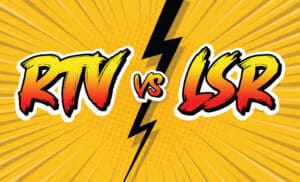Designing a keyboard involves many decisions related to appearance and functionality. But there’s also something called a tactile response that is also important when choosing the type of key you want. A tactile response is basically how the key feels when you push it and how well it performs the intended instruction.
The designers at Si-Tech work alongside the client to come up with the best tactile response possible for their product and needs. We base this decision on your type of industry as well as the demands that will be made on the keys on any given day. Every business is different, which means every tactile response request will be different.
Let’s go over some top factors to consider when choosing your keys.
1. Force and Tactile Response
In the process of designing your silicone rubber keypad, consider how much force you want to apply, or more accurately, how much force is needed for effectiveness. The easiest is achieved through metal domes, with no need for a diaphragm. However, metal domes aren’t always the best choice. Either they cannot or should not be used in some applications.
When that happens, diaphragms (AKA webs or webbing) will be used. These are basically the thin, hinged areas of a keypad that provide flexibility. You can increase or decrease as needed the force generated by the diaphragm. One way is to modify the angle. Keep in mind that a lower angle has less force, and larger angle has more.
When increasing the thickness of the diaphragm, you also increase the force that is necessary to achieve the desired tactile response.
2. Key Types
You’ll have to settle on a key type as part of the silicone keypad creation process. First, do you want tact switches or metal domes, or do you want to short the pad with an electrical source that is contained within the silicone key itself? Now, do you want the keypad to be tactile? In other words, do you want the buttons to feel like those on your microwave oven, or those on your TV remote control?
Microwave oven buttons are flat and come with a minimal or non-existent click yet perhaps an audible selection. But in the case of a TV remote, the keys “snap” when you press them. With tact switches or metal domes, the “Pusher Pad” silicone key design is probably best. This uses a “dead web”, which is essentially a flat diaphragm that won’t give you that double-click response.
What determines the height of the contact surface? It’s the height of the tact switch or metal dome.
You could also try the “Rocker Type” button, which is another popular type when it comes to key design. This uses several shorting pads within one key. If you’re looking to move an object forwards and backwards with the press of just one key, this could be a good option.
3. Force Curve
The force curve involves the relation of the key travel and the required force to achieve that movement, AKA the amount of force you must exert to depress the key. The actuation force is at the top of the curve, and this is the force necessary to collapse the membrane.
A related force is called touch force, which is the amount of force needed to maintain key closure.
The one you choose will depend on the industry you’re in as well as the intended usage of the keypad.
Contact Si-Tech
To learn more about tactile response and which would be best for your product, contact us today at 757-887-8488.








